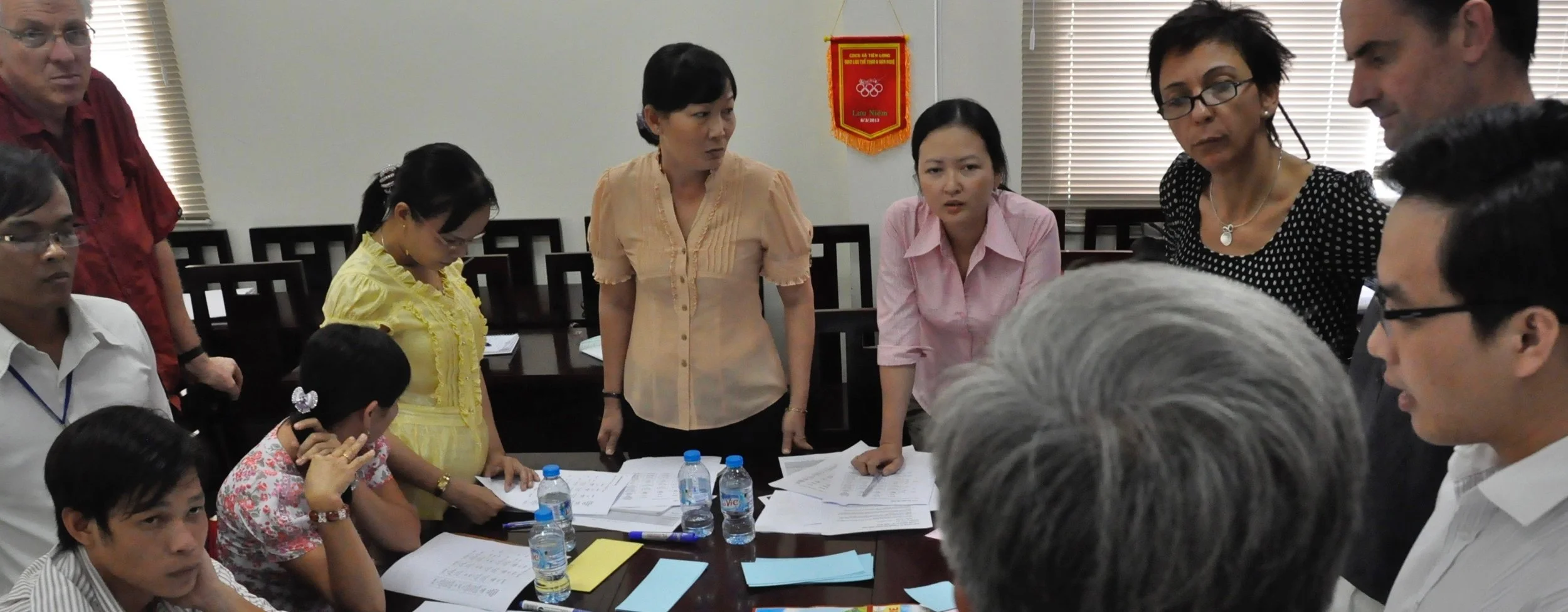About Double Diamond (4D)
Originally developed by the British Design Council in 2005, Double Diamond (4D) is a research and design model used to encourage the co-creation of innovative solutions to complex challenges in a structured but user-centred way. Analysis, design and intervention are not separated but merged into a continuous process of trial, learning and adaptation. The 4D logic (Discover, Define, Develop, Deliver) helps structure this process.
Double Diamond balances divergent and convergent thinking. In the first cycle or ‘diamond’, co-designers explore an issue more broadly or deeply (divergent thinking), then take focused action (convergent thinking). In the second cycle or ‘diamond’, solutions are created (divergent thinking), and then tested and refined (convergent thinking). Emphasizing iteration, the model encourages exploration of a wide range of possibilities and ideas, which based on insights and feedback are filtered and further refined.
How we use it
While Design Forum offers an approach for designing and facilitating collaborative engagement workshops, Double Diamond provides a model for longer-term design and transition processes involving a mix of workshops, research, ongoing work in small teams, feedback and reflection sessions.
We typically use the Double Diamond model combined with PIALA for developing evidence-based and utilisation-focused innovation pathways and MEL frameworks. Furthermore we use the model to foster the co-creation of business and investment solutions that promote the development of a sustainable and climate resilient economy.
Main steps/phases
1. Discover. The first phase involves empathetic engagements with users through readings, consultations and engagement in team meetings to gather insights into the user contexts and needs, unpack existing hypotheses, identify potential alternatives, and outline the design options for the next phases.
2. Define. This phase ensures that the solutions developed later are firmly grounded in real user needs. It involves design meetings or workshop sessions with users to define the core problems and discuss the options to address these, based on the insights gathered in Phase 1.
3. Develop. This is the ideation phase in which solutions are developed to address the agreed core problems. Creativity is emphasised over feasibility at this stage. The main purpose is to produce a set of concepts and tools that may be further pursued and tested in Phase 4.
4. Deliver. In this phase, ideas/solutions are turned into prototypes and tested with the users. The process may involve sequential prototyping in stable contexts or parallel experiments in more volatile contexts. It may require multiple 4D iterations of feedback and testing to ensure that final solutions are robust, feasible and used.










